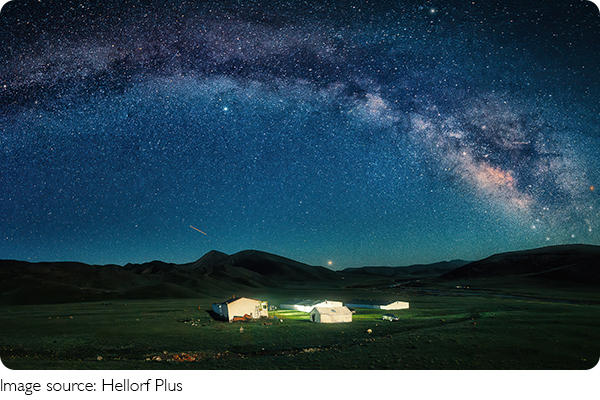Why the Sky is Blue

Have you ever looked up on a clear day and wondered, "Why is the sky blue?" It's one of those questions we've all thought about as kids—and even as grown-ups.
It feels simple, but the answer is packed with science, light, and a little bit of wonder. So let's take a journey through the sky together and break it down in a way that actually makes sense.
It Starts With Sunlight
Sunlight might look white to us, but it's actually made up of many colors—just like a rainbow. These colors travel as waves, and each color has a different wavelength. For example, red light waves are long, and blue or violet light waves are short.
So when sunlight enters Earth's atmosphere, it brings all these colors with it. But that's just the beginning of the story.

The Atmosphere Is the Filter
As sunlight travels through the atmosphere, it doesn't just pass straight through. It bumps into gas molecules like oxygen and nitrogen. These tiny particles scatter the light in all directions.
But here's the key part: shorter wavelengths (like blue and violet) scatter more than the longer ones (like red and yellow). This process is called Rayleigh scattering, and it's the main reason why we see blue skies.
Why Blue and Not Violet?
Technically, violet light is scattered even more than blue. So why doesn't the sky look purple instead?
There are two reasons. First, our eyes are more sensitive to blue light than to violet light. Second, a lot of violet light gets absorbed by the upper atmosphere before it ever reaches us. So even though it's out there, we don't really see it. What we mostly see is the scattered blue.
Sunset Tells a Different Story
Now think about sunrise or sunset. Why does the sky turn orange, pink, or red during those times?
When the sun is lower in the sky, its light has to travel through more of the atmosphere. The short blue and violet waves get scattered away before reaching our eyes, so what's left are the longer red and orange wavelengths. That's why sunsets look so fiery and dramatic—it's the same sunlight, just filtered differently.
Clouds and Pollution Make a Difference
On days when the sky isn't bright blue, there's usually a reason. Clouds scatter all the colors of light almost evenly, which is why they look white or gray. And if there's a lot of pollution or dust in the air, it can change how the light is scattered, sometimes making the sky look more pale or hazy.

Why It's More Than Just Color?
Knowing why the sky is blue isn't just about fun facts—it helps us understand how light, air, and even our own eyes work together. It's also why astronauts in space don't see a blue sky at all. Without an atmosphere to scatter the sunlight, space looks black even when the sun is shining.
We See the Sky Differently Around the World
Have you noticed that the sky can look slightly different depending on where we are? In places with cleaner air and less humidity, the sky often looks deeper blue. Near the ocean or in big cities, it might seem lighter or grayer. It's all connected to how particles in the air scatter the light.
So, Next Time You Look Up…
Lykkers, next time we're outside on a sunny day, let's take a moment to appreciate the blue above us. It's not just a color—it's the result of sunlight, air, and physics all working together.
Now that we know why the sky is blue, here's a question for you: what's your favorite time of day to look at the sky? Morning? Sunset? Or maybe after the rain when the sky is crystal clear? Let us know—we'd love to hear how the sky inspires you!

 · Travel team
· Travel team